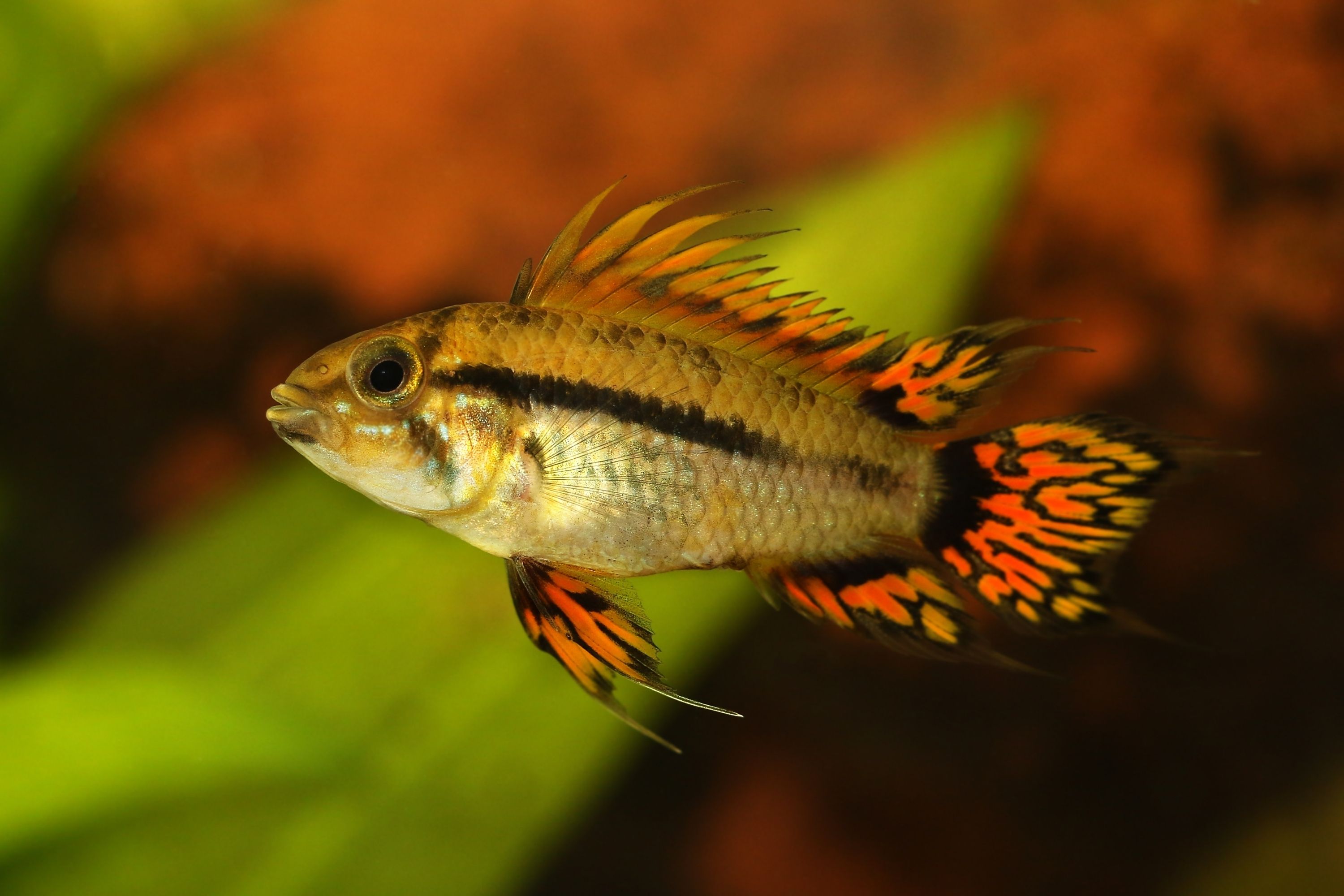Cockatoo cichlid
(Apistogramma cacatuoides)

Description
Apistogramma cacatuoides or the cockatoo dwarf cichlid is a South American cichlid and the Apistogramma species most commonly bred in captivity. The male cockatoo dwarf cichlid reaches a body length of 8 centimetres. The female is considerably smaller, reaching only 5 centimetres. The body shape is long and of middle height and the mouth is rather big with thick lips. The male is more colorful than the female, usually with red/orange dorsal and caudal fins. The leading 3 or 4 hard rays are elongated, and the ventral fins are clear. In color, the female is quite dull but with a clear black line running along her flanks. Her background color is a pale yellow, but this will become vibrant when mating or brood protecting. In addition, she lacks the elongated dorsal rays of the male and her ventral fins show a black leading edge. There are several color forms which naturally occur in the wild; these include blues, yellows and some reds. Because of selective breeding the colors are now much more pronounced. Both sexes have a dark line leading from the eye to the bottom of the gill flap. The cockatoo dwarf cichlid is found in the Amazon River basin, in tributaries of the Ucayali, Amazon and Solimões rivers from the Pachitea River to Tabatinga in Peru and Colombia where it lives in small shallow streams or lagoon-like waters in the rain forest. The fish prefer a water temperature between 24 and 28 °C. The bottom of these waters is covered with leaves that are used by the fish for hiding.
Taxonomic tree:







